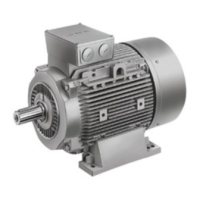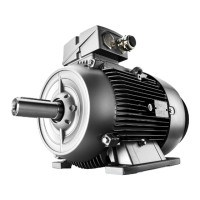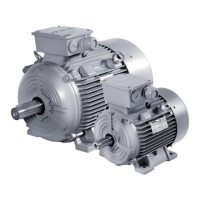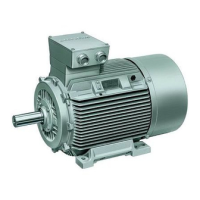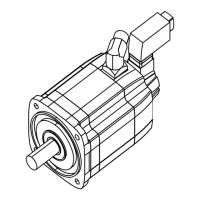Normal operation
Measure the normal operating temperature T
operation
at the installation site in °C. Set the values
for shutdown and warning according to the operating temperature T
operation
. The set values
depend on the design of the insulation system or the temperature class of the machine. The
data can be found on the rating plate.
Table 7-4 Set values for monitoring the winding temperatures in normal operation
Set value Insulation class 155(F) Insulation class 180(H)
Warning T
op
+ 10 K ≤ 145 °C T
op
+ 10 K ≤ 170 °C
Shutdown T
op
+ 15 K ≤ 155 °C T
op
+ 15 K ≤ 180 °C
7.6 Test run
After installation or inspection, carry out a test run:
1. Start up the machine without a load. To do this, close the circuit breaker and do not switch
off prematurely. Check whether it is running smoothly.
Switching the machine off again while it is starting up and still running at slow speed should
be kept to a bare minimum, for example for checking the direction of rotation or for checking
in general.
Allow the machine to run down before switching it on again.
2. If the machine is running smoothly and evenly, switch on the cooling equipment. Continue
to observe the machine for a while in no-load operation.
3. If it runs perfectly, connect a load.
NOTICE
Thermal overload of motors connected directly to the line supply
In addition to the load torque, the ramp-up (accelerating) time is essentially influenced by
the moment of inertia to be accelerated. While ramping up when connected to the line
supply, the inrush (starting) current is a multiple of the rated current. This can result in
thermal overload. This can damage the motor.
As a consequence, when ramping up, observe the following:
● Monitor the ramp-up time and number of consecutive starts.
● Comply with the limit values and/or ramp-up conditions specified in the catalog or the
order documentation.
Start-up
7.6 Test run
SIMOTICS TN Series N-compact 1LA8
Operating Instructions 05/2016 85
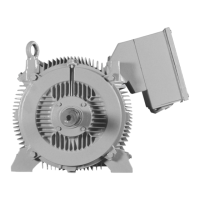
